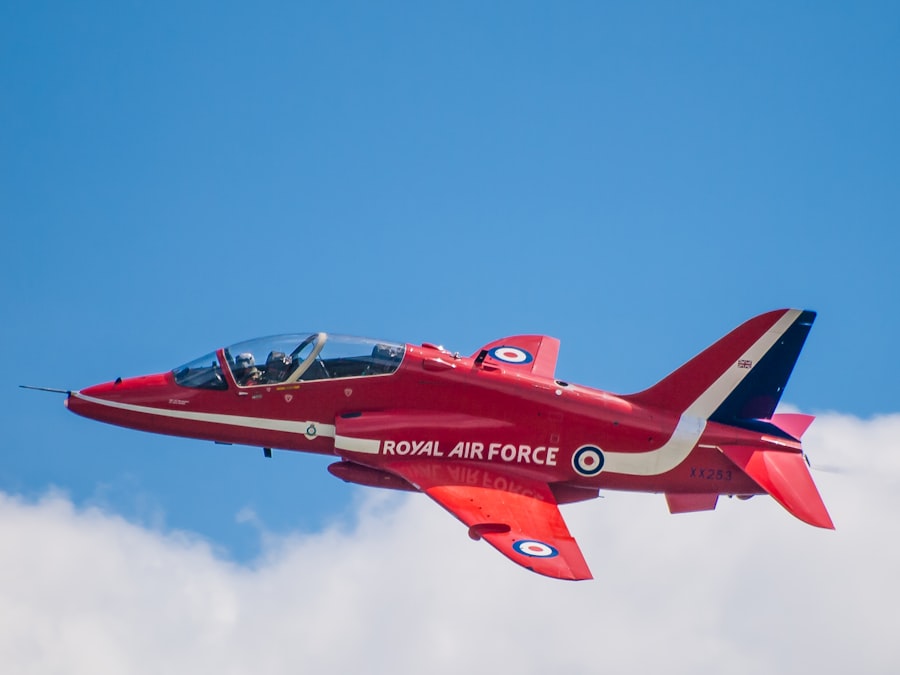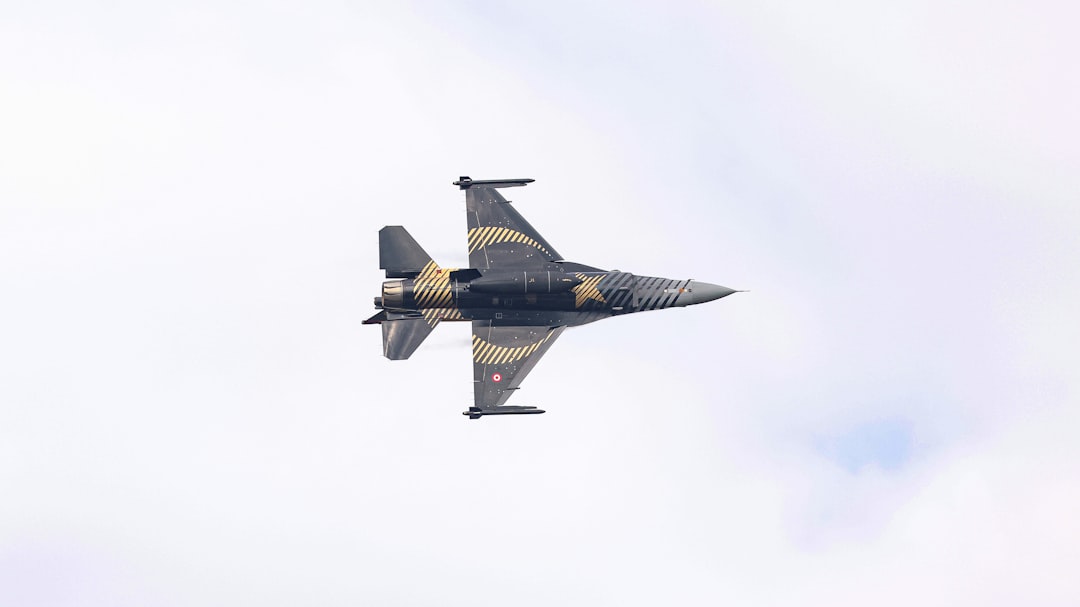Air shows have a rich and storied history that dates back to the early 20th century, coinciding with the advent of powered flight. The first recorded air show took place in 1909 at the Reims Aviation Meeting in France, where pioneering aviators showcased their aircraft and flying skills to an enthusiastic audience. This event marked a significant milestone in aviation history, as it not only demonstrated the capabilities of early aircraft but also ignited public interest in aviation as a thrilling spectacle.
As aviation technology advanced, so too did the complexity and excitement of air shows, evolving from simple exhibitions of flight to elaborate performances featuring a variety of aircraft. By the 1920s and 1930s, air shows began to gain popularity in the United States and Europe, often held in conjunction with county fairs or other public events. These gatherings provided a platform for aviators to demonstrate their skills and for manufacturers to showcase their latest innovations.
The Golden Age of Aviation, which spanned from the 1920s to the 1940s, saw the emergence of iconic aircraft and legendary pilots, further enhancing the allure of air shows. During World War II, military aviation took center stage, with air shows featuring demonstrations of fighter planes and bombers, captivating audiences with displays of speed and agility. The post-war era continued this trend, as air shows became a staple of summer entertainment, drawing crowds eager to witness the marvels of flight.
The Spectacular Aircraft on Display
One of the most captivating aspects of air shows is the diverse array of aircraft on display. From vintage biplanes to cutting-edge military jets, these events offer a unique opportunity for aviation enthusiasts and casual spectators alike to marvel at the engineering feats that have shaped modern flight. Vintage aircraft, such as the iconic Boeing B-17 Flying Fortress or the graceful North American P-51 Mustang, often take to the skies during these events, providing a glimpse into the past and honoring the legacy of early aviation.
These planes are meticulously restored and maintained by dedicated enthusiasts who appreciate their historical significance and craftsmanship. In contrast, modern military aircraft like the F-22 Raptor or the Boeing F/A-18 Super Hornet showcase the latest advancements in aerodynamics and technology. These jets are not only visually striking but also represent the pinnacle of engineering prowess, capable of performing maneuvers that defy the laws of physics.
The juxtaposition of historical and contemporary aircraft creates a dynamic atmosphere at air shows, allowing attendees to appreciate the evolution of aviation over the decades. Additionally, many air shows feature experimental aircraft and innovative designs from private companies, highlighting the ongoing advancements in aerospace technology and inspiring future generations of aviators.
The Thrilling Aerobatic Performances

Aerobatic performances are often the highlight of any air show, captivating audiences with breathtaking displays of skill and precision. These performances typically feature highly trained pilots executing complex maneuvers that showcase their aircraft’s capabilities while pushing the limits of human endurance and skill. Aerobatic teams, such as the Blue Angels or the Thunderbirds, are renowned for their synchronized flying, performing intricate formations that require impeccable timing and coordination.
The sight of multiple jets soaring through the sky in perfect unison is a testament to both pilot expertise and rigorous training. The maneuvers performed during these aerobatic displays can range from simple loops and rolls to more advanced techniques like barrel rolls and vertical climbs. Pilots often perform high-speed passes that leave trails of smoke in their wake, adding an extra layer of excitement to the performance.
The thrill is amplified by the roar of engines and the sheer speed at which these aircraft move through the sky. Many air shows also feature solo aerobatic performers who demonstrate their individual skills through a series of daring stunts, often accompanied by music that enhances the overall experience. These performances not only entertain but also educate spectators about the capabilities of different aircraft and the art of aerobatics.
The Skilled Pilots Behind the Spectacle
Behind every breathtaking aerial display is a skilled pilot whose dedication and training have prepared them for such high-stakes performances. Becoming an aerobatic pilot requires years of experience, often starting with basic flight training before progressing to more advanced maneuvers. Many pilots have backgrounds in military aviation, where they receive rigorous training in handling high-performance aircraft under various conditions.
This foundation equips them with the skills necessary to execute complex aerobatic routines safely and effectively. The mental fortitude required for aerobatic flying cannot be overstated. Pilots must maintain intense focus while performing maneuvers that can induce significant G-forces, which can lead to physical strain or disorientation if not managed properly.
Additionally, pilots must possess a deep understanding of their aircraft’s capabilities and limitations, allowing them to push boundaries while ensuring safety. The camaraderie among pilots is also noteworthy; they often share tips and techniques with one another, fostering a culture of continuous improvement within the aerobatic community. This dedication to excellence is what transforms an air show into a mesmerizing spectacle that leaves audiences in awe.
The Family-Friendly Atmosphere
Air shows are designed to be family-friendly events that cater to audiences of all ages. Organizers often create an inviting atmosphere where families can enjoy a day filled with excitement and entertainment. Many air shows feature designated areas for children with activities such as face painting, bounce houses, and educational exhibits about aviation.
This focus on family engagement ensures that even the youngest attendees can appreciate the wonders of flight while having fun. In addition to activities for children, air shows often include opportunities for families to interact with pilots and aviation professionals. Meet-and-greet sessions allow attendees to ask questions and learn more about what it takes to become a pilot or work in the aviation industry.
This personal connection fosters a sense of community among attendees and inspires future generations to pursue careers in aviation. The overall atmosphere is one of celebration and camaraderie, where families can bond over shared experiences while enjoying thrilling performances in a safe environment.
The Interactive Exhibits and Activities

Beyond the aerial displays, air shows often feature interactive exhibits that engage attendees in hands-on learning experiences related to aviation. These exhibits may include flight simulators that allow visitors to experience what it’s like to pilot an aircraft or static displays showcasing various types of planes and helicopters. Many air shows partner with local aviation schools or organizations to provide educational resources that highlight the science behind flight, making it an enriching experience for all ages.
Workshops and demonstrations are also common at air shows, where experts share insights into topics such as aircraft maintenance, aerodynamics, and flight safety. Attendees can participate in activities like building model airplanes or learning about navigation techniques used by pilots. These interactive elements not only enhance the overall experience but also promote an appreciation for aviation as a field of study and career path.
By immersing visitors in hands-on activities, air shows create lasting memories while fostering a deeper understanding of the complexities involved in flying.
The Delicious Food and Refreshments
No air show experience would be complete without indulging in delicious food and refreshments available on-site. Vendors typically offer a wide variety of culinary options ranging from classic fair food like funnel cakes and corn dogs to gourmet food trucks serving up unique dishes. This diverse selection ensures that there is something for everyone, catering to different tastes and dietary preferences.
In addition to traditional fare, many air shows feature local specialties that reflect the region’s culinary culture. Attendees can enjoy everything from barbecue ribs to fresh seafood, providing an opportunity to savor local flavors while enjoying thrilling aerial performances. Refreshments such as lemonade stands or craft beer tents add to the festive atmosphere, allowing families to relax and recharge between acts.
The combination of great food and exciting entertainment creates an enjoyable environment where attendees can fully immerse themselves in the air show experience.
Tips for Attending the Air Show
Attending an air show can be an exhilarating experience, but preparation is key to making the most out of your visit. First and foremost, it’s essential to check the event schedule ahead of time so you don’t miss any key performances or exhibits you’re particularly interested in seeing. Arriving early can also provide you with better parking options and allow you ample time to explore before the show begins.
Dressing appropriately for weather conditions is crucial; wearing layers can help you adapt to changing temperatures throughout the day. Comfortable shoes are also recommended since you may find yourself walking long distances between exhibits and seating areas. Bringing sunscreen is wise as well; spending hours outdoors under direct sunlight can lead to sunburn if precautions aren’t taken.
Additionally, consider packing snacks or water bottles for your family; while there will be plenty of food options available, having your own refreshments can save time and money. Planning your day around specific performances can enhance your experience significantly; knowing when your favorite acts are scheduled allows you to secure good viewing spots early on. Lastly, don’t forget your camera!
Capturing moments from thrilling aerial displays or candid family interactions will create lasting memories that you can cherish long after the event has concluded. By following these tips, you can ensure that your visit to an air show is both enjoyable and memorable for everyone involved.
FAQs
What is an air show?
An air show is a public event where aircraft are displayed and perform aerobatic maneuvers for the entertainment of the audience.
What can I expect to see at an air show?
At an air show, you can expect to see a variety of aircraft including military jets, vintage planes, aerobatic performers, and sometimes even parachute demonstrations.
Are air shows safe to attend?
Air shows are generally safe to attend, as they are carefully planned and executed with safety as a top priority. However, it is important for attendees to follow all safety guidelines and instructions provided by the organizers.
Can I take photos and videos at an air show?
Yes, most air shows allow attendees to take photos and videos of the aircraft and performances. However, it’s important to respect any designated areas where photography may be restricted for safety reasons.
Are air shows only for aviation enthusiasts?
No, air shows are for people of all ages and interests. They offer a unique and exciting experience for anyone who enjoys seeing aircraft in action and witnessing thrilling aerial displays.
How can I find an air show near me?
You can find air shows near you by checking event listings on aviation websites, social media, and local news outlets. Many air shows also have their own official websites with information on dates, locations, and ticket sales.










